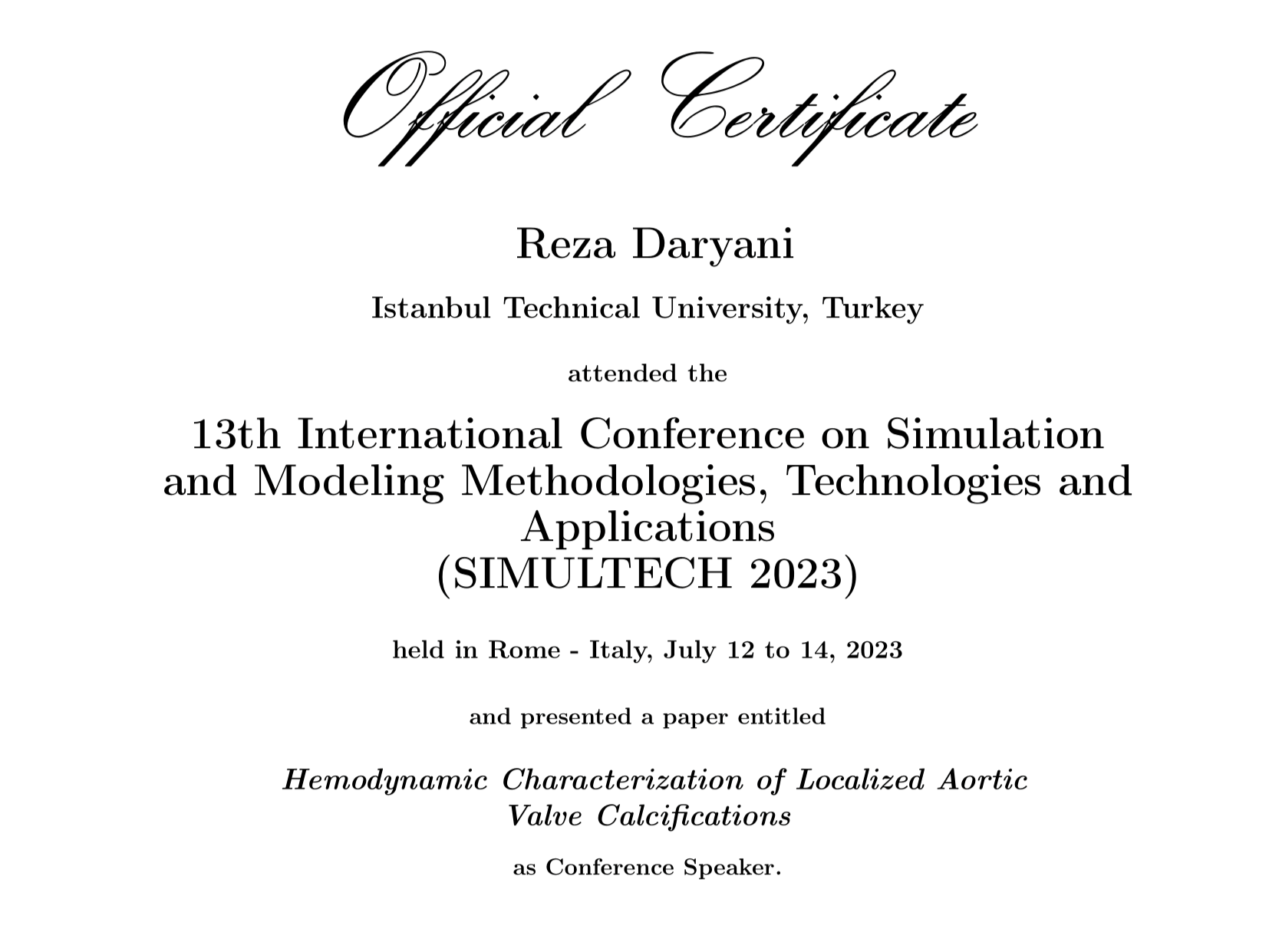At the 13th International Conference on Simulation and Modeling Methodologies, Technologies and Applications (Simultech 2023) held in Rome, Italy, Reza Daryani delivered an online presentation on the numerical investigation of localized aortic valve calcifications and their impact on hemodynamic performance.

Location: Rome, Italy
Date: July 12-14, 2023
Presentation Title: Hemodynamic Characterization of Localized Aortic Valve Calcifications
At the 13th International Conference on Simulation and Modeling Methodologies, Technologies and Applications (Simultech 2023) held in Rome, Italy, Reza Daryani delivered an online presentation on the numerical investigation of localized aortic valve calcifications and their impact on hemodynamic performance.
The study focused on aortic valve stenosis, a condition where calcium accumulation on the valve leaflets restricts their motion, reducing the effective orifice area and impeding proper blood flow. This degenerative disease, if left untreated, can lead to severe cardiovascular complications and mortality.
Using single-phase fluid–structure interaction (FSI) simulations, the research compared various calcification severity levels against a healthy valve model. Through computational modeling, the study captured how these localized calcium patterns influence critical flow metrics, such as transvalvular pressure gradients, flow velocity profiles, and a range of wall shear stress (WSS)–based indices.
The findings shed light on the biomechanical consequences of non-uniform calcification, offering valuable insights for the diagnosis, prognosis, and design of next-generation prosthetic valves in clinical cardiology and biomedical engineering.